APAC Feed Prebiotics Market Size
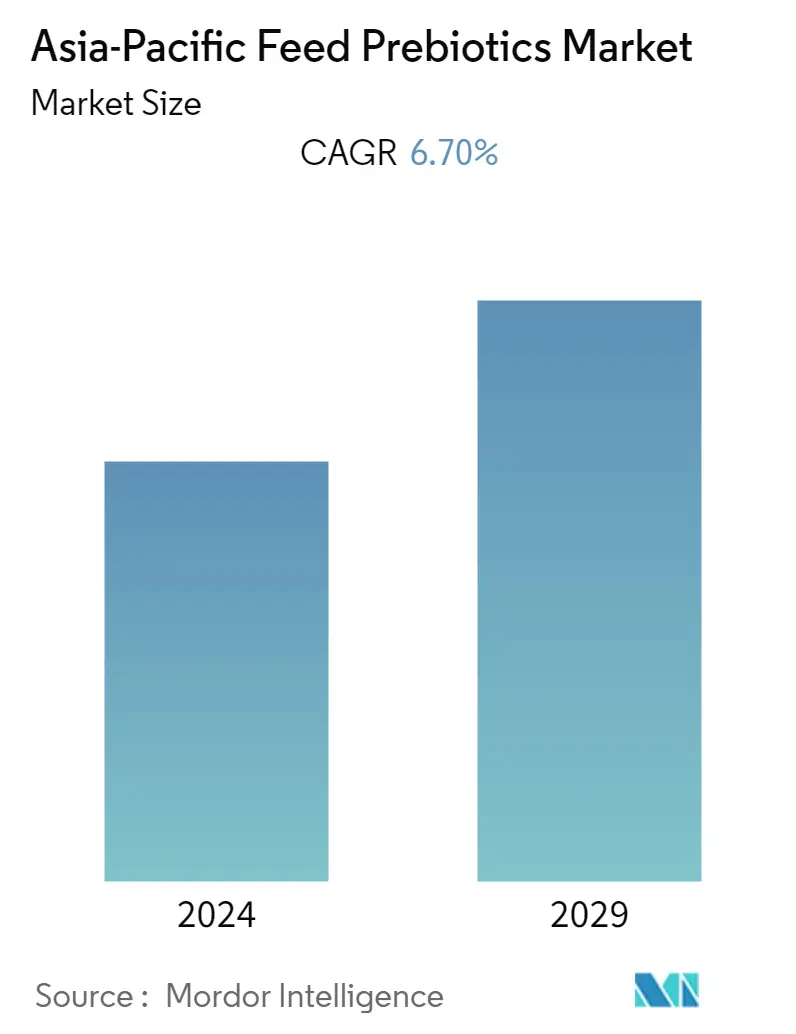
| Study Period | 2019 - 2029 |
| Base Year For Estimation | 2023 |
| Forecast Data Period | 2024 - 2029 |
| Historical Data Period | 2019 - 2022 |
| CAGR | 6.70 % |
| Market Concentration | Low |
Major Players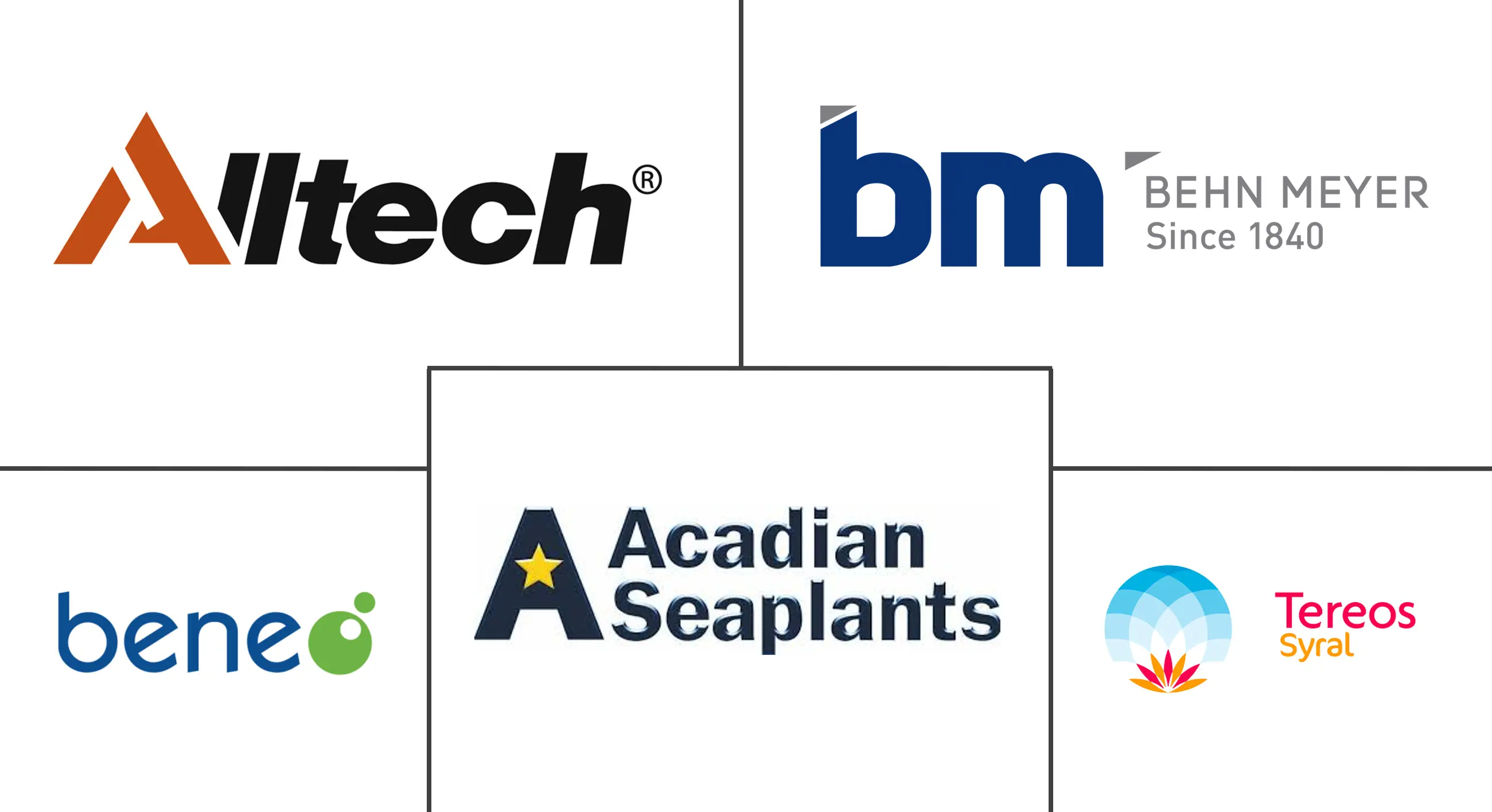
*Disclaimer: Major Players sorted in no particular order |
APAC Feed Prebiotics Market Analysis
The Asia Pacific feed prebiotics market is projected to register a CAGR of 6.7% over the forecast period (2020-2025). Growth in the industrial production of livestock and processed meat industry is driving the demand for feed prebiotics in the region. Increasing consumer awareness and the occurrence of livestock diseases have led the way to feed prebiotics market growth. The consumers are giving importance to the extrinsic qualities and attributes of the meat that they consume, and the conditions under which the meat is produced. Certain pathogenic and parasitic contamination in meat products, such as Salmonella, Listeria, and E. coli, along with outbreaks of various diseases among the livestock animals, such as Avian Influenza and African Swine Fever, have raised concerns about the quality and safety of meat. This has led to the use of feed additives, such as enzymes, prebiotics, and vitamins, which provide balanced nutrition to the animals and protect them against such harmful environmental factors. Thus, increased awareness and high demand for safe meat and milk products are prompting the livestock industry and meat manufacturers to use additives, like prebiotics.
APAC Feed Prebiotics Market Trends
This section covers the major market trends shaping the APAC Feed Prebiotics Market according to our research experts:
Increased Meat and Seafood Consumption
The Asia-Pacific region is the leading compound feed producing and consuming region in the world, thereby inflicting a direct impact on the feed prebiotics market. Demographic change in the Asia-Pacific is primarily characterized by proliferating middle-income households and rising levels of income, which have led to changes in dietary preferences of the population, thereby, resulting in an increased per capita consumption of meat and seafood. With greater awareness among the population regarding the importance of protein-rich diets, an increase in the consumption of animal protein sources is expected. According to the Food and Agricultural Organization's (FAO) data for the period of 2010-17, fish production in the region increased from 16.02 million tons in 2010 to 17.9 million tons in 2017. To date, the production, solely from aquaculture, has continued to increase at a steady rate of 5% since 2016. Therefore, livestock and aquaculture yields are expected to improve by way of adoption of better feed management practices and increased use of feed additives such as feed prebiotics in the region, thereby driving the market during the forecast period.
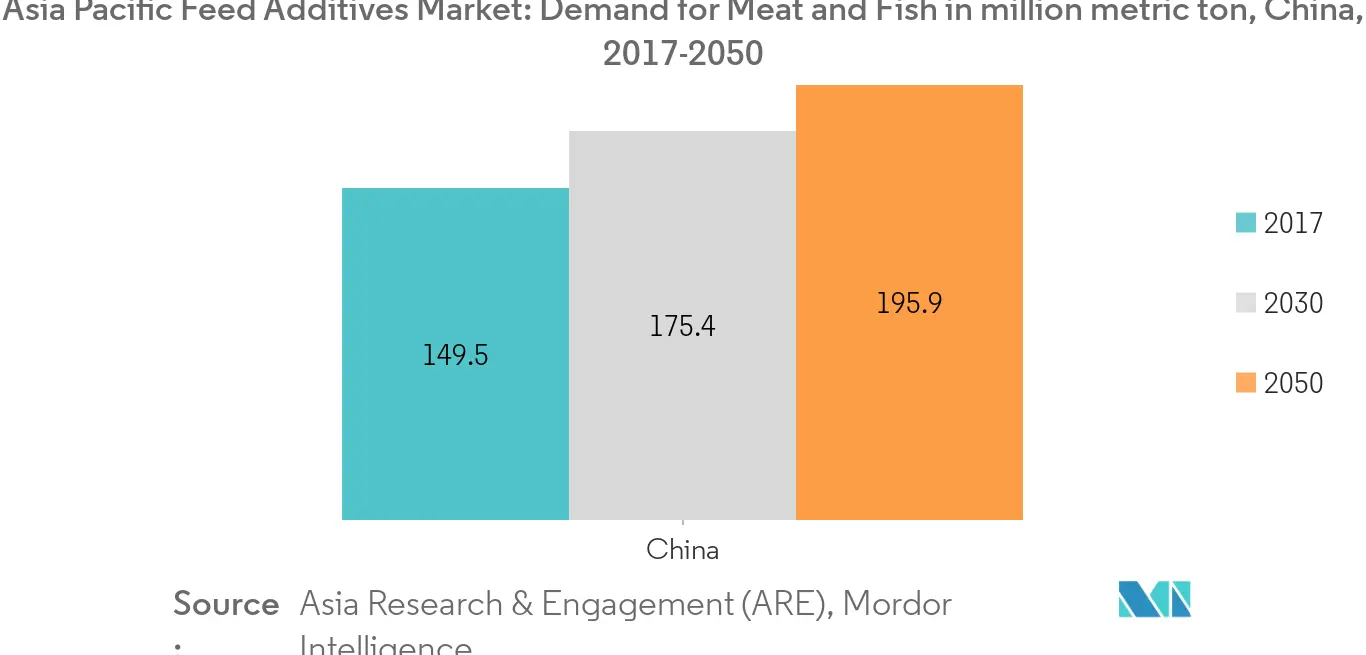
Inulin Dominates the Market of Feed Prebiotics
The inulin segment of the market accounted for a share of 38.5%, in 2019. Inulin has been proven to be beneficial to aquaculture and it is extensively used as an additive in the feed for carp, shrimp, and tilapia. Through the process of fermentation, inulin becomes healthy intestinal microflora, bifidobacterium. The raw material for inulin, chicory root, is also used as raw materials for other lucrative businesses, like the coffee industry. Of the total inulin production, nearly 20% is utilized by the animal feed industry. Human consumption is a competing market, due to the availability of inulin for the feed industry. Although the R&D expenditure on inulin has remained high, the extensive usage of inulin in animal feed, due to its multiple positive effects on animal nutrition, has led to the sustained growth of the inulin segment of the global feed prebiotics market in the Asia Pacific region.
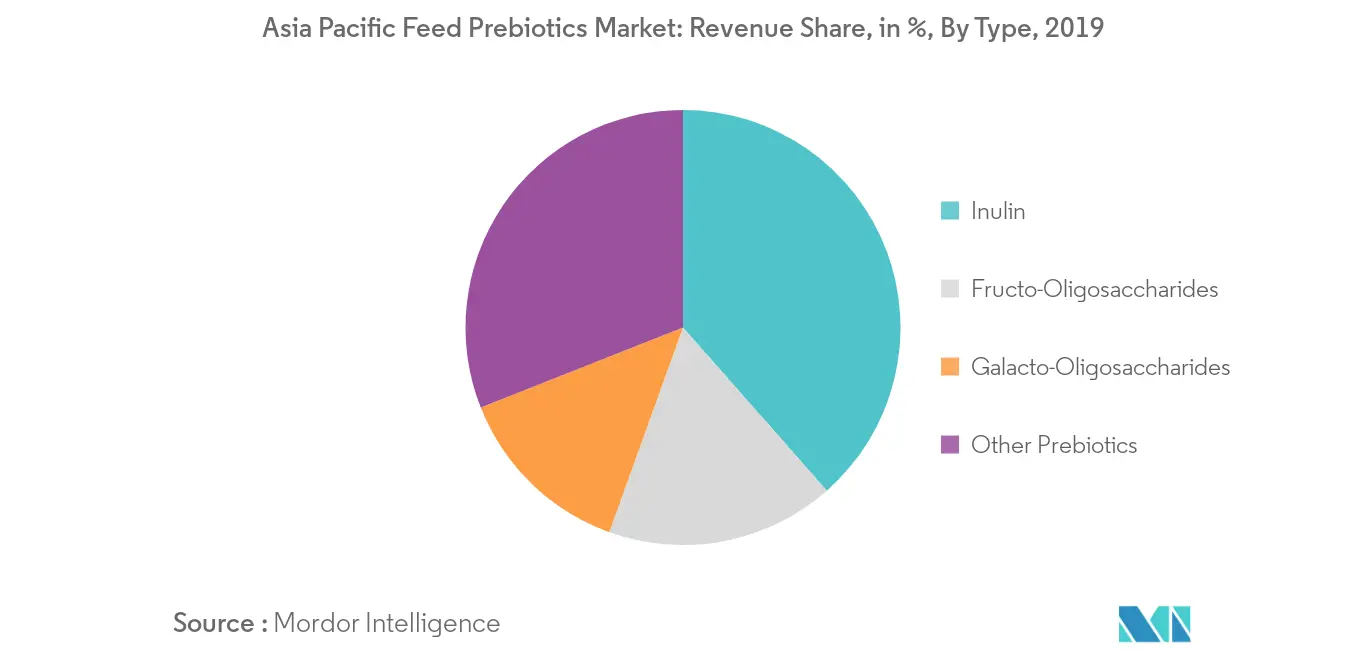
APAC Feed Prebiotics Industry Overview
The Asia Pacific feed prebiotics market is fragmented, with the top global and regional players competing fiercely with the local players for significant market share. The major players in the market are Alltech, Inc., Cargill, Inc., Beneo GmbH, FrieslandCampina Domo, and Beghin Meiji (Tereos S.A.), among others. The focus on quality, through extensive investment in product R&D, is the most adopted strategy of the leading players across the region. The major investments are directed toward product-line expansions and the innovation of new products, for expanding the customer base.
APAC Feed Prebiotics Market Leaders
-
Alltech Inc.
-
Beneo GmbH
-
Acadian Seaplants Ltd
-
Behn Meyer
-
Beghin Meiji (Tereos S.A.)
*Disclaimer: Major Players sorted in no particular order
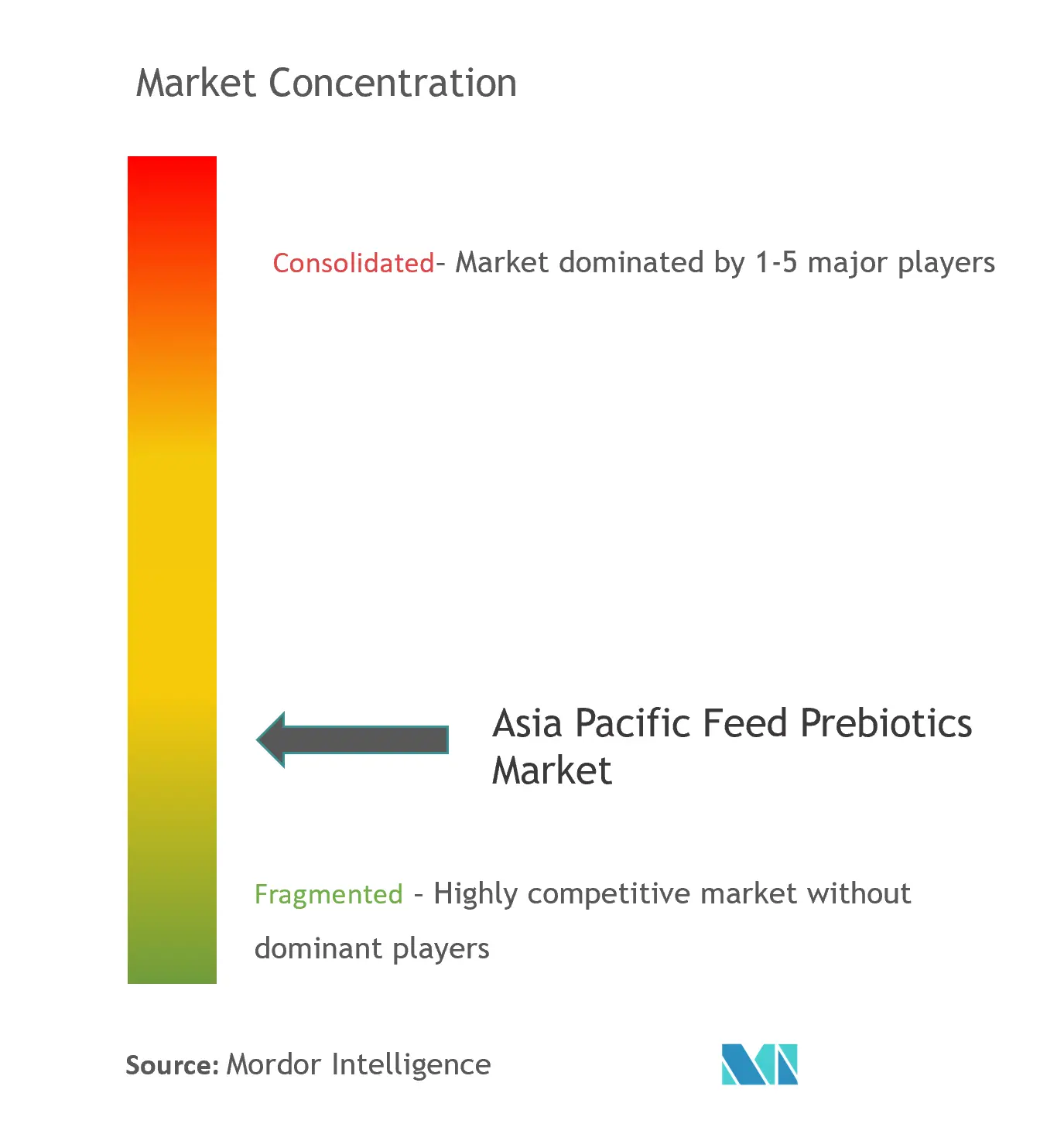
APAC Feed Prebiotics Market Report - Table of Contents
1. INTRODUCTION
- 1.1 Study Assumptions and Market Definition
- 1.2 Scope of the Study
2. RESEARCH METHODOLOGY
3. EXECUTIVE SUMMARY
4. MARKET DYNAMICS
- 4.1 Market Overview
- 4.2 Market Drivers
- 4.3 Market Restraints
-
4.4 Porter's Five Forces Analysis
- 4.4.1 Bargaining Power of Suppliers
- 4.4.2 Bargaining Power of Buyers
- 4.4.3 Threat of New Entrants
- 4.4.4 Threat of Substitute Products
- 4.4.5 Intensity of Competitive Rivalry
5. MARKET SEGMENTATION
-
5.1 Type
- 5.1.1 Inulin
- 5.1.2 Fructo-Oligosaccharides
- 5.1.3 Galacto-Oligosaccharides
- 5.1.4 Other Types
-
5.2 Animal Type
- 5.2.1 Ruminants
- 5.2.2 Poultry
- 5.2.3 Swine
- 5.2.4 Aquaculture
- 5.2.5 Other Animal Types
-
5.3 Geography
- 5.3.1 China
- 5.3.2 India
- 5.3.3 Japan
- 5.3.4 Australia
- 5.3.5 Thailand
- 5.3.6 Rest of Asia-Pacific
6. COMPETITIVE LANDSCAPE
- 6.1 Most Adopted Strategies
- 6.2 Market Share Analysis
-
6.3 Company Profiles
- 6.3.1 Acadian Seaplants Ltd
- 6.3.2 Alltech Inc.
- 6.3.3 Beneo GmbH
- 6.3.4 Behn Meyer
- 6.3.5 Beghin Meiji (Tereos S.A.)
- 6.3.6 Cosucra Groupe Warcoing SA
- 6.3.7 FrieslandCampina Domo
- 6.3.8 Abbott Laboratories
- 6.3.9 Cargill Inc.
- *List Not Exhaustive
7. MARKET OPPORTUNITIES AND FUTURE TRENDS
8. IMPACT OF COVID-19
** Subject To AvailablityAPAC Feed Prebiotics Industry Segmentation
The report covers the prebiotics used in compound feed, as a part of the market scope. The market for prebiotics used as supplements in home-based feed is excluded from the market scope and the end consumers of the products include feed mills. On the basis of type, the global feed prebiotics market is segmented into inulin, fructooligosaccharides, galactooligosaccharides, and other types. On the basis of animal type, the market is segmented into ruminants, poultry, swine, aquaculture, and other animal types. Furthermore, on the basis of geography, the market is segmented into major countries of the Asia Pacific region.
| Type | Inulin |
| Fructo-Oligosaccharides | |
| Galacto-Oligosaccharides | |
| Other Types | |
| Animal Type | Ruminants |
| Poultry | |
| Swine | |
| Aquaculture | |
| Other Animal Types | |
| Geography | China |
| India | |
| Japan | |
| Australia | |
| Thailand | |
| Rest of Asia-Pacific |
APAC Feed Prebiotics Market Research FAQs
What is the current Asia-Pacific Feed Prebiotics Market size?
The Asia-Pacific Feed Prebiotics Market is projected to register a CAGR of 6.70% during the forecast period (2024-2029)
Who are the key players in Asia-Pacific Feed Prebiotics Market?
Alltech Inc., Beneo GmbH, Acadian Seaplants Ltd , Behn Meyer and Beghin Meiji (Tereos S.A.) are the major companies operating in the Asia-Pacific Feed Prebiotics Market.
What years does this Asia-Pacific Feed Prebiotics Market cover?
The report covers the Asia-Pacific Feed Prebiotics Market historical market size for years: 2019, 2020, 2021, 2022 and 2023. The report also forecasts the Asia-Pacific Feed Prebiotics Market size for years: 2024, 2025, 2026, 2027, 2028 and 2029.
Asia-Pacific Feed Prebiotics Industry Report
Statistics for the 2024 Asia-Pacific Feed Prebiotics market share, size and revenue growth rate, created by Mordor Intelligence™ Industry Reports. Asia-Pacific Feed Prebiotics analysis includes a market forecast outlook to 2029 and historical overview. Get a sample of this industry analysis as a free report PDF download.



